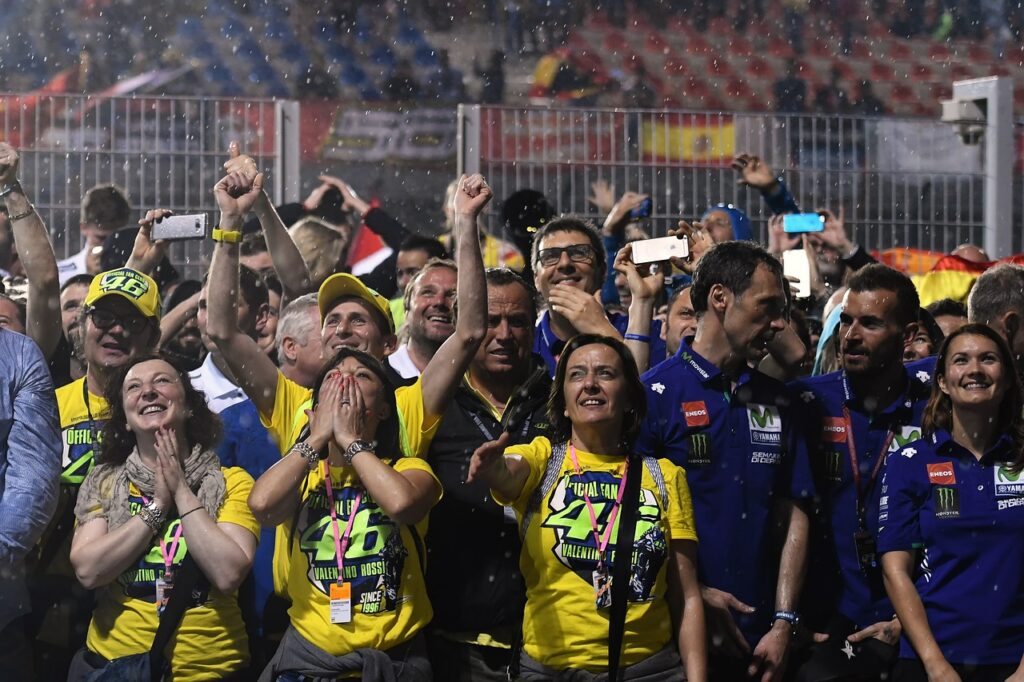Sports marketing campaigns have the power to captivate sports fans and create a deep connection with brands. Whether it’s through sponsorships or digital promotions, strategic ad placement plays a crucial role in maximizing visibility and impact for your brand. By carefully planning and positioning ad inventory, you can ensure that your message reaches the right audience at the right time, creating a lasting impression.
Key Takeaways:
- Ad placement is a vital component of successful sports marketing campaigns.
- Strategic placement of ads ensures maximum visibility and impact for your brand.
- Media planning and buying are essential for reaching the right audience at the right time.
- Effective advertising strategies in sports marketing require thoughtful ad positioning tactics.
- Maximizing visibility through strategic ad placement can lead to increased brand exposure and customer engagement.
The Synergy Between Digital Marketing and Sports
Mobile technologies and social media have revolutionized the sports industry and transformed the way sports businesses engage with their audiences. In this section, we will explore the seamless integration of digital marketing and sports, highlighting some of the most innovative campaigns and strategies implemented by leading brands.
Red Bull Stratos: Defying Limits with Live Streaming
Red Bull is widely recognized for its groundbreaking marketing campaigns, and the Red Bull Stratos mission was no exception. This daring project involved Felix Baumgartner’s record-breaking freefall from the edge of space. By live streaming this thrilling event, Red Bull effectively captured millions of viewers’ attention across the globe, showcasing their brand’s passion for pushing boundaries and inspiring awe-inspiring moments of human achievement.
“Thank You, Mom”: Emotional Storytelling by Procter & Gamble
Procter & Gamble’s “Thank You, Mom” campaign captured the hearts of viewers during the Olympic Games. The campaign celebrated the unwavering support and sacrifices made by mothers to help their children achieve greatness in sports. Through emotional storytelling and heartwarming visuals, Procter & Gamble successfully resonated with audiences on a deep and personal level, forging a strong connection between their brand and the values of dedication, love, and perseverance.
Under Armour: Authenticity and Athlete Endorsements
Under Armour is recognized as a pioneer in sports marketing, leveraging the power of authenticity and athlete endorsements to promote their brand. Through strategic partnerships with top athletes like Michael Phelps, Tom Brady, and Stephen Curry, Under Armour has effectively positioned itself as a leader in athletic performance gear. By showcasing the dedication and hard work of these athletes, Under Armour has created a sense of aspiration and motivation among its audience, encouraging them to pursue their own athletic goals.
Unibet: Data-Driven Campaigns and Personalization
Unibet, a leading online gambling company, has embraced the power of data-driven marketing to personalize their campaigns and engage with their target audience. By analyzing user behavior and preferences, Unibet tailors their promotions and betting options to provide a personalized and relevant experience for each individual. This approach not only maximizes customer satisfaction but also increases the likelihood of repeat engagements and enhanced customer loyalty.
Sport England: Inspiring Active Lifestyles
Sport England’s “This Girl Can” campaign aimed to inspire and empower women to participate in sports and physical activities, breaking down barriers and challenging societal norms. Through powerful and inclusive messaging, Sport England provided a platform for women of all backgrounds and abilities to embrace their potential and overcome self-doubt. By effectively utilizing social media and diverse media channels, Sport England increased the visibility and awareness of their campaign, ultimately driving a significant increase in female participation in sports.
Seattle Seahawks: Engaging Fans through Social Media
The Seattle Seahawks, an NFL team known for their passionate fanbase, has successfully leveraged social media platforms to foster engagement and create a sense of community among their fans. Through creative and interactive content, such as behind-the-scenes videos, player interviews, and fan-centric campaigns, the Seahawks have built a strong and loyal online following. This fan engagement not only amplifies the team’s brand but also creates a virtual space for fans to connect, share their experiences, and contribute to the team’s success.
Starbucks and Paddy Power: Capitalizing on Sponsorship Opportunities
Major brands like Starbucks and Paddy Power have capitalized on sponsorship opportunities to increase brand exposure and align themselves with the world of sports. Starbucks, for example, has partnered with sports events and teams to promote their brand and products, connecting with an active and diverse audience. Paddy Power, a renowned betting and gaming company, sponsors various sports events and teams, leveraging these partnerships to bolster brand visibility and attract new customers.
These examples showcase just a fraction of the countless digital marketing campaigns that have left a lasting impact on the sports industry. By combining innovative strategies, social media platforms, and captivating storytelling, brands have successfully captured the attention and engagement of their target audiences, establishing a powerful synergy between digital marketing and sports.
What is Sports Marketing and its Key Goals?
Sports marketing is a subdivision of marketing that focuses on promoting sports events, products, equipment, services, and teams through sporting events, athletes, and sports teams. The key goal of sports marketing is to promote a physical product or brand name by utilizing the influence of athletes or sports teams.
Sports marketing employs various advertising channels to reach the target audience. It follows the traditional marketing model of the four Ps, which are product, price, place, and promotion. However, sports marketing also includes additional elements specific to the sports industry.
Advertising Channels
In sports marketing, advertising channels play a crucial role in reaching the target audience and maximizing brand exposure. These channels can include television, radio, print media, online platforms, social media, product placements, and sponsorships. By utilizing these channels effectively, brands can enhance their visibility and credibility among sports enthusiasts.
The Four Ps in Sports Marketing
The four Ps of marketing, which are product, price, place, and promotion, form the foundation of sports marketing strategies. Here’s how these elements apply in the context of sports marketing:
- Product: In sports marketing, the product could be a physical product, such as sports apparel or equipment, or it could be a service, such as sports event organization or sports facility management.
- Price: Price strategies in sports marketing involve determining the right pricing structure for sports products or services. Factors such as demand, competition, and perceived value are taken into account.
- Place: Place refers to the distribution channels used to make sports products or services accessible to the target audience. This can include physical retail stores, e-commerce platforms, or even sports event venues.
- Promotion: Promotion is a vital element in sports marketing. It involves creating marketing campaigns, advertising, and promotional activities to increase brand visibility and create a buzz around sports events, athletes, or teams.
Additional Elements in Sports Marketing
In addition to the traditional marketing model, sports marketing includes unique elements specific to the sports industry. These elements further enhance brand exposure and promotion:
- Influencers: Leveraging the influence of athletes, sports personalities, or sports teams as brand ambassadors or endorsers to promote products or services.
- Credibility: Building credibility by associating with successful sports teams, athletes, or sports events, which can enhance the image and reputation of a brand.
- Sports Promotion: Developing and executing promotional strategies that cater specifically to sports enthusiasts, leveraging their passion and interest in sports to engage and attract them.
- Sports Marketing Mix: Crafting a marketing mix that integrates the traditional four Ps with sports-specific elements, such as planning, packaging, positioning, and perception.
By understanding these key elements of sports marketing, brands can develop effective strategies that not only increase brand exposure but also engage and resonate with the target audience in the highly competitive sports industry.
Where Can We See Sports Marketing in Action?
Sports marketing is an integral part of major sporting events, providing brands with opportunities to gain widespread exposure and connect with their target audiences. Let’s explore some of the key platforms where sports marketing strategies come to life.
FIFA World Cup
The FIFA World Cup is the most-watched sporting event globally, attracting millions of viewers around the world. Brands like Nike, Adidas, and Puma utilize sponsorships and strategic advertising campaigns to showcase their products to a global audience. From eye-catching commercials during the matches to on-field branding and merchandise collaborations, the FIFA World Cup offers ample opportunities for brand exposure.
Super Bowl
The Super Bowl, the pinnacle of American football, is not only a highly anticipated game but also a platform for brands to showcase their creativity. Commercials aired during the Super Bowl have gained legendary status, with brands like McDonald’s capitalizing on the massive viewership to reach a wide audience. The half-time show is another avenue for brands to engage with viewers through memorable performances and product placements.
NBA
The NBA, known for its global popularity and star power, provides sponsors with incredible visibility. Brands like Nike, known for their strong association with basketball, leverage their partnerships with NBA players to create impactful advertising campaigns. From player endorsements to court-side branding and jersey sponsorships, the NBA offers a variety of opportunities for brands to enhance their exposure.
Social Media and Television
In today’s digital age, social media platforms play a crucial role in sports marketing. Brands use platforms like Facebook, Instagram, and Twitter to engage fans, share behind-the-scenes content, and promote their products. Television broadcasts also offer extensive opportunities for brands to showcase their commercials and create memorable advertising moments during games. McDonald’s, Nike, and other major brands often incorporate these mediums into their sports marketing strategies.
Overall, sports marketing is a dynamic field that thrives on the grand stages of major sporting events. The FIFA World Cup, Super Bowl, NBA, and a strong presence on television and social media all provide valuable platforms for brands to connect with their target audiences and gain maximum brand exposure.
The History and Evolution of Sports Marketing
The history of sports marketing can be traced back to the 1870s, when the concept of product placement and brand awareness in sports first emerged. Brands realized the potential of leveraging sports events and athletes to promote their products and increase brand exposure.
In the early days, brands focused on creating brand credibility through partnerships with sports teams and athletes. This involved placing their products in prominent positions during sporting events, such as having their logos displayed on jerseys or sponsoring teams. This strategic product placement aimed to enhance brand awareness and association with the excitement and energy of sports.
With the advent of televised coverage, sports marketing took on a new dimension. Brands recognized the power of reaching millions of viewers through televised sports events. They began investing heavily in advertising during games, creating commercials that captured the attention of viewers and associated their products with the thrill and passion of sports.
As technology advanced and digital marketing became more prevalent, sports marketing further evolved. Brands started utilizing social media platforms to engage with fans and create deeper connections. They leveraged influencer marketing to tap into the popularity and influence of athletes, further increasing brand exposure.
Today, sports marketing goes beyond traditional advertising and focuses on capturing attention, fostering connections, and driving conversations. Brands strive to create experiences that resonate with fans, using immersive activations, interactive campaigns, and personalized content.
In summary, the history of sports marketing showcases the evolution from early product placement and brand awareness to the modern era of televised coverage and digital marketing. The focus has shifted from creating brand credibility to gaining brand exposure, attention, connection, and conversation. Sports marketing continues to adapt and innovate, embracing new technologies and strategies to engage with fans and drive brand success.
Conclusion
In conclusion, sports marketing presents unique opportunities for brands to promote their products and reach their target audience through the power of sports. However, it is crucial to prioritize responsible gambling practices and protect vulnerable populations from harm.
To ensure the integrity of sports marketing, industry standards must be upheld. Transparency and public awareness campaigns play a vital role in educating the public about the potential risks associated with gambling and promoting healthier behaviors.
Furthermore, ongoing research and education are essential to understanding the impact of sports marketing on athletes, teams, leagues, and the public. By staying informed and implementing ethical practices, brands can contribute to positive social change while still achieving their marketing objectives.
As the sports marketing industry continues to evolve, it is up to all stakeholders to work together to strike a balance between promoting products and safeguarding the well-being of individuals. By adhering to responsible gambling practices, prioritizing public awareness, conducting research, and following industry standards, we can build a sustainable future for sports marketing that benefits everyone involved.
FAQ
What is ad placement in sports marketing?
Ad placement in sports marketing refers to the strategic positioning of advertisements to maximize visibility and impact for a brand. It involves careful media planning and buying to ensure that ads are placed in the most relevant and effective locations.
How can strategic ad placement maximize visibility?
Strategic ad placement ensures that advertisements are seen by the target audience in key locations and during relevant events. By strategically positioning ads, brands can increase their visibility and reach a larger number of sports fans.
What is the role of ad positioning in sports marketing?
Ad positioning is crucial in sports marketing as it determines how and where advertisements are placed to attract maximum attention and engagement. The strategic placement of ads can create a strong connection between the brand and the audience.
What are some visibility tactics used in sports marketing?
Visibility tactics in sports marketing include sponsorships during major sporting events, partnerships with sports teams and athletes, commercial placements during televised games, halftime shows, and leveraging social media platforms for increased exposure.
How does ad placement contribute to an effective advertising strategy in sports marketing?
Ad placement is a key component of an effective advertising strategy in sports marketing. By strategically placing ads in locations and events that are highly relevant to the target audience, brands can increase the likelihood of capturing their attention and influencing their purchasing decisions.
Can you give examples of successful sports marketing campaigns?
Some examples of successful sports marketing campaigns include Red Bull’s Stratos jump, Proctor and Gamble’s “Thank You, Mom” Olympics campaign, Under Armour’s partnership with the Seattle Seahawks, and Starbucks’ involvement in the NBA. These campaigns utilized innovative digital marketing techniques and sponsorships to engage their target audiences.
Source Links
- https://www.bannerflow.com/blog/7-great-sports-marketing-campaigns
- https://avada.io/resources/sports-marketing.html
- https://www.unlv.edu/sites/default/files/page_files/2693/IGI-TheMarketingMoment-UNLVIGIReport.pdf

We at SportsBizTrends.com give you free sports business and marketing trends through written articles and a popular newsletter. Get fresh insights and ideas from around the world. We scout and compile, you read and act.









